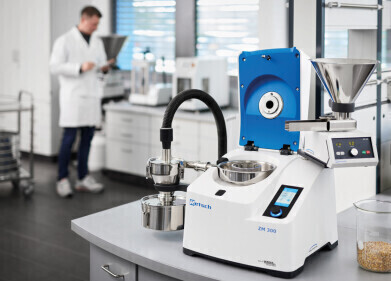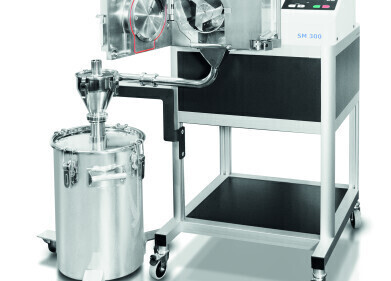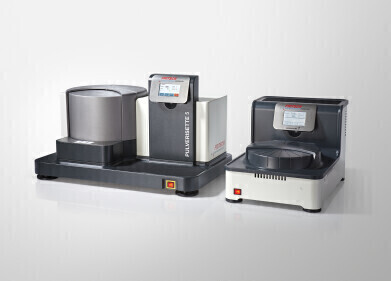-
 Planetary Mills classic line
Planetary Mills classic line -
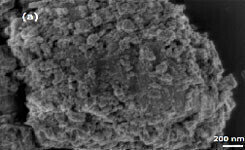 Fig. 3: REM‐picture of a material after mechanochemical treatment [5]
Fig. 3: REM‐picture of a material after mechanochemical treatment [5] -
 Fig. 1: A mortar: the simplest instrument of mechanical
Fig. 1: A mortar: the simplest instrument of mechanical -
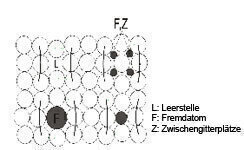 Fig. 2: Presentation of various atomic structure alterations
Fig. 2: Presentation of various atomic structure alterations
Mills and Grinders
Planetary-all Mills as an instrument in mechanochemistry
Dec 17 2012
Mechanochemistry is a sub‐group of physical chemistry and addresses the effects of mechanical energy on solids and the resulting chemical modifications. Here, FRITSCH Planetary Mills have been indispensable for a long time.
History of mechanochemistry
Chemistry can be divided in many different fields. Electrochemistry and biochemistry are to be mentioned as an example. The beginnings of mechanochemistry can be traced to the start of the 19th Century[1] . The first studies were conducted by M. Carey Lea and focused on mechanically induced reactions of solids. Lea used a metal halide and processed it with a mortar: separating the metal and halogen. This was the beginning of numerous research activities and thus founded an additional sub field of physical chemistry [2].
The goal of mechanochemistry
In mechanochemistry, the emphasis is on the synthesis of new materials, respectively the alteration of existing material properties. Here it is attempted to break apart the known atomic structure of a material and the links of individual atoms chains or also replacing existing gaps with other material[3]. This process requires special conditions, since in these structures numerous forces are at work. With a Planetary Ball Mill the needed high impact forces, high pressures and the necessary temperature are perfectly obtained [4 ].
Fields of application
One specific field of the mechanochemistry is the tribochemistry, it deals with mechanical alloying. The term tribochemistry is derived from tribology, which means the study of friction. During mechanical alloying only surfaces are coated with other materials and the core structure is not altered.
Due to the already mentioned forces during mechanochemistry, the particle size of the material becomes smaller and the specific surface enlarged.
The resulting nano particles feature other physical and chemical properties than the macroscopic ones.
Therefor is the production and researching of nano scale materials another important field of mechanochemistry. In the pharmaceutical field, mechanochemistry is utilized to convert active substances into polymorphous forms. This is often problematic, since the naturally available polytypes are biologically ineffective. The hydrogen energy technology was fortified with new storage possibilities. With the mechanochemical modification of the storage cells, the capacity and absorption kinetic can be increased.
An additional interesting application is the solvent‐free synthesis of materials in Planetary Ball Mills.
Further lectures on Mechanochemistry can be found at here
Sources and continuative Literature:
[1] Chemie 10. Aufl., C. Mortimer und U Müller, Thieme Verlag
[2] Chemie der Werkstoffe 2. Aufl., H. Briehl, Vieweg+Teubner Verlag
[3] Werkstoffkunde 17. Aufl., W. Weißbach, Vieweg Verlag
[4] Verfahrenstechnik, Mechanische Verfahrenstechnik 3. Aufl., W. Fratzscher, G. Gruhn, K.Militzer und H. Schubert,Spektrum
Akademischer Verlag
[5] Šepelák, V., Menzel, M., Bergmann, I., Wiebcke, M., Krumeich, F., Becker, K.D., J. Magn. Magn. Mater. 2004, 272‐276, 1616.
Digital Edition
Lab Asia 31.6 Dec 2024
December 2024
Chromatography Articles - Sustainable chromatography: Embracing software for greener methods Mass Spectrometry & Spectroscopy Articles - Solving industry challenges for phosphorus containi...
View all digital editions
Events
Jan 22 2025 Tokyo, Japan
Jan 22 2025 Birmingham, UK
Jan 25 2025 San Diego, CA, USA
Jan 27 2025 Dubai, UAE
Jan 29 2025 Tokyo, Japan

